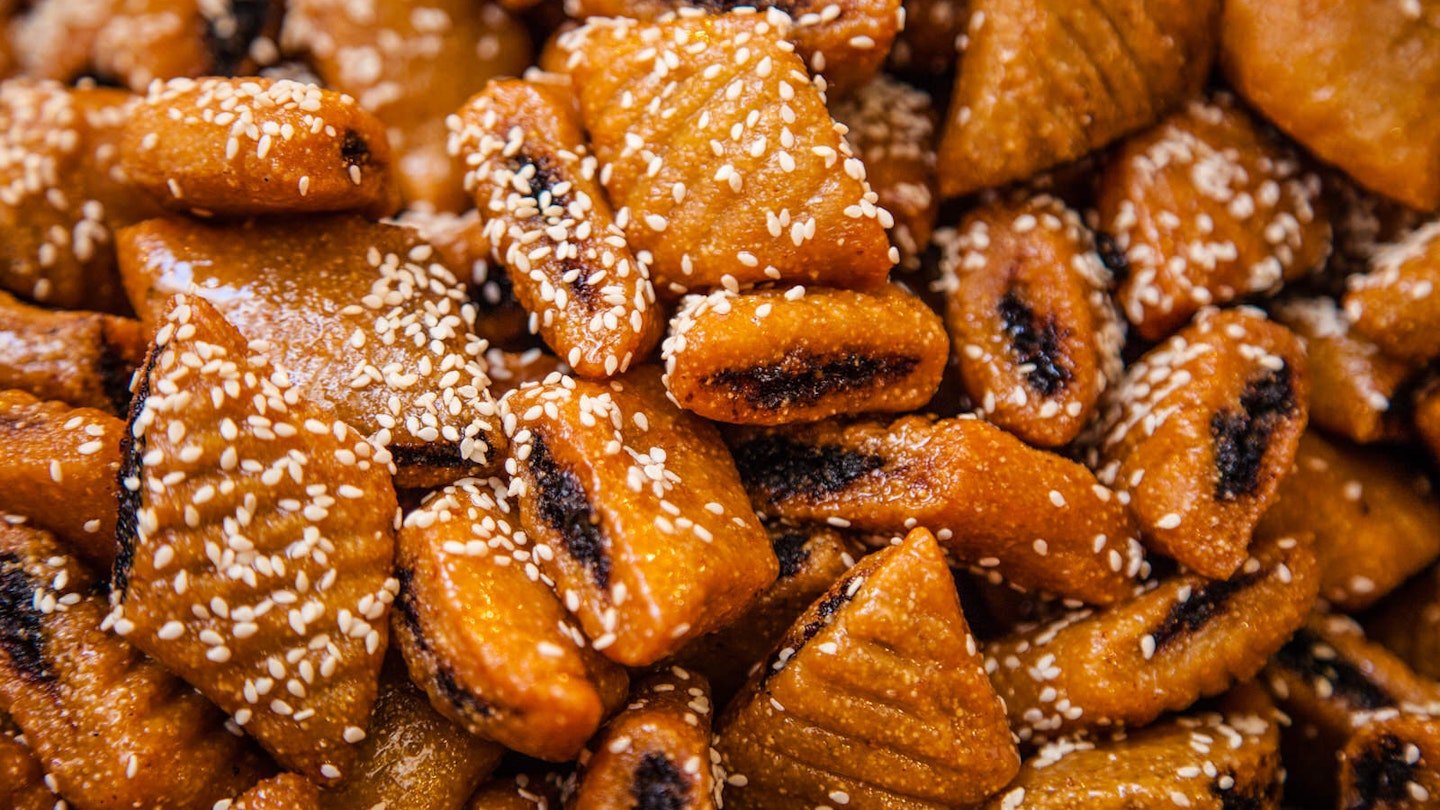Tunisians love to eat, but not as much as they love to feed their guests. If you’re invited to a Tunisian home for dinner, you’ll be regaled with a variety of heartwarming and palate-pleasing delights. Beautiful ceramic platters painted in colourful geometric patterns or the traditional green and yellow make the presentation of a dish as impressive as its preparation – you’ll want to dig in immediately.

Even if you’re not lucky enough to be extended an invitation to feast, there are many options for a meal, from fine-dining restaurants to simple eateries and roadside stalls serving up street food. Tunisian cuisine is typically Mediterranean and is made up of vegetables, cereals, legumes, lamb, chicken, or beef, as well as a plethora of aromatic spices and herbs, and generous amounts of olive oil. It also reflects its rich history: there are Berber, Arab, Jewish, and Andalusian influences, as well as smatterings of Turkish, Italian, and French fare.
Beware: Tunisian food can be spicy! Many dishes are enhanced with generous dollops of harissa, a household staple. This heady mixture of chilli peppers, garlic, caraway seeds, and salt is all ground into a thick paste, which is also almost always served as a condiment.
Popular Dishes in Tunisia
Here are a few of the most common dishes you’ll come across in Tunisia and must sample to expand and humour your palate.
Shakshuka
This typical Tunisian dish is also popular in the Middle East, where it was introduced by Tunisian Jews who migrated to Israel. Hearty and delicious, this stew-like dish is prepared with tomatoes, onions, garlic, and green peppers, along with a variety of optional ingredients such as potatoes, courgettes, or even broad beans when they’re in season in early spring. Eggs are often added during the cooking process so that they slowly poach in the liquidy soup. This simple lunch or dinner is eaten with bread: break off chunks to dip into the sauce.
If you want to try an authentic shakshuka, head to Dar Bellaaj in Sfax’s historic medina. Shakshuka is one of the specialities of this charming family-run eatery, and several different versions can be sampled here.

Brik à l’oeuf
Brik à l’oeuf is a classic you’ll find on every Tunisian restaurant menu. A thin sheet of pastry called malsouka is filled with an egg yolk, folded into a triangular shape, and deep fried. Coriander and parsley are common ingredients added to the filling, or sometimes cheese or a bit of potato or tuna. It’s best when piping hot: give it a sprinkle of lemon juice before biting into the crunchy pastry. Brik à l’oeuf must be eaten with your hands, and the trick is to not let the runny egg drip down your chin or onto your fingers!

Couscous
Couscous is probably the best-known dish from North Africa and is common to all the countries of the Maghreb. At its origin, couscous is a Berber dish and consists of a stew-like sauce of vegetables like potatoes, tomatoes, courgettes, carrots, squash, or pumpkin, and lamb or chicken that’s served on a bed of semolina. Fish is a common ingredient in the version from Djerba and other coastal regions. Couscous can be prepared in a multitude of ways, but in Tunisia, the stew always contains tomatoes and the semolina is mixed with a tomato-based sauce.
Lablabi
Lablabi is a simple but hearty winter dish that’s served at casual eateries (often called gargottes) across Tunisia. Don’t be surprised if the waiter brings you an empty bowl and a basket of bread immediately after taking your order. This is your cue to set to work by breaking off bits of bread and filling your bowl with them. Over this, the waiter will then pour ladles of a soup-like mixture made of chickpeas stewed with a divine mixture of olive oil, harissa, cumin, lemon juice, garlic, and salt. Lablabi is sometimes topped with sliced hard-boiled eggs and tuna, so ask for it sans oeufs et thon if you’re vegetarian or vegan.

Slata mechouia
This salad is another Tunisian staple served as a starter at almost every meal. Literally meaning ‘grilled salad’, it’s made up of tomatoes and green peppers charred over an open fire and then finely chopped and mixed with onions, garlic, ground coriander, and caraway seeds, lemon juice, and plenty of olive oil. Harissa is also a dominant ingredient so watch out – this salad is spicy! Common toppings are sliced hard-boiled eggs and tuna.
Tunisian Salad
Refreshing and light, Tunisian salad is a common side dish of finely chopped tomatoes, onions, cucumbers, and sometimes radish or apple. Olive oil, lemon, salt, and pepper are the main seasonings, along with dried mint for extra flavor. Olives liven things up further, and the ubiquitous toppings of chopped egg and tuna once again make an appearance.

Makroudh
Among the many calorie-rich Tunisian sweets, makroudh is one of the most popular. Originating in Kairouan, this fried dessert is made of semolina flour and olive oil and filled with date paste before being doused in sugar syrup.





